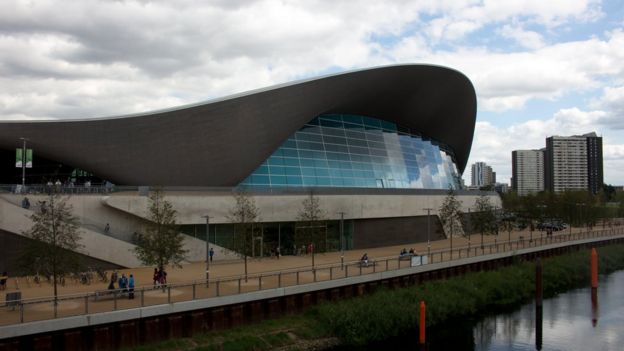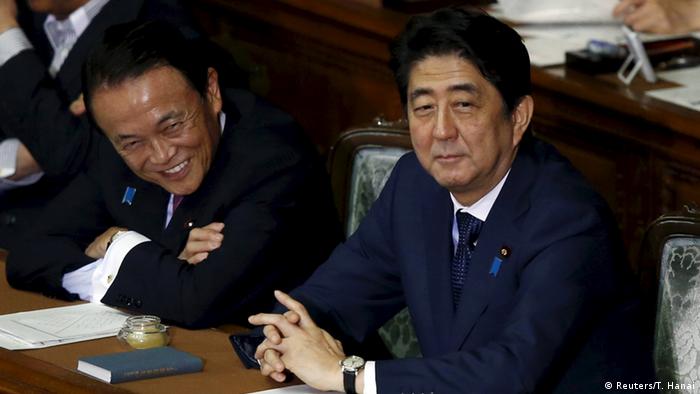Hachikō (ハチ公?, November 10, 1923–March 8, 1935), known in Japanese as
chūken Hachikō (忠犬ハチ公?, "faithful dog Hachikō" ('hachi' meaning 'eight', a number referring to the dog's birth order in the litter, and 'kō', meaning prince or duke)), was an
Akita dog born on a farm near the city of
Ōdate,
Akita Prefecture,
[1] remembered for his remarkable loyalty to his owner, even many years after his owner's death.
Life
In 1924,
Hidesaburō Ueno, a professor in the agriculture department at the
University of Tokyo, took in Hachikō as a pet. During his owner's life, Hachikō greeted him at the end of each day at the nearby
Shibuya Station. The pair continued their daily routine until May 1925, when Professor Ueno did not return. The professor had suffered from a
cerebral hemorrhage and died, never returning to the train station where Hachikō was waiting. Every day for the next nine years the golden brown Akita waited at Shibuya station.
Hachikō was given away after his master's death, but he routinely escaped, returning again and again to his old home. Eventually, Hachikō apparently realized that Professor Ueno no longer lived at the house. So he went to look for his master at the train station where he had accompanied him so many times before. Each day, Hachikō waited for the return of his owner.
The permanent fixture at the train station that was Hachikō attracted the attention of other commuters. Many of the people who frequented the Shibuya train station had seen Hachikō and Professor Ueno together each day. They brought Hachikō treats and food to nourish him during his wait.
This continued for nine years with Hachikō appearing precisely when the train was due at the station.
[2]
Publication
That same year, one of Ueno's students (who had become an amateur expert on the
Akita breed) saw the dog at the station and followed him to the Kobayashi home (the home of the former gardener of Professor Ueno — Kikuzaboro Kobayashi
[3]) where he learned the history of Hachikō's life. Shortly after this meeting, the former student published a documented census of Akitas in Japan. His research found only 30 purebred Akitas remaining, including Hachikō from Shibuya Station.
He returned frequently to visit the dog and over the years published several articles about Hachikō's remarkable loyalty. In 1932 one of these articles, published in
Tokyo Asahi Shimbun, threw the dog into the national spotlight. Hachikō became a national sensation. His faithfulness to his master's memory impressed the people of Japan as a spirit of family loyalty all should strive to achieve. Teachers and parents used Hachikō's vigil as an example for children to follow. A well-known Japanese artist rendered a sculpture of the dog, and throughout the country a new awareness of the Akita breed grew.
Eventually, Hachikō's legendary faithfulness became a national symbol of loyalty.
Death
Hachikō died on March 8, 1935, and was found on a street in Shibuya.
[4] After decades of rumors, in March 2011 scientists settled the cause of death of Hachiko. The dog had terminal cancer and a filaria infection (worms). There were also four
yakitori sticks in Hachiko's stomach, but the sticks did not damage his stomach or cause his death.
[5][6]
His
stuffed and mounted remains are kept at the
National Science Museum of Japan in
Ueno, Tokyo.
[7][8]
Bronze statues
In April 1934, a bronze statue in his likeness was erected at Shibuya Station (
35°39′32.6″N 139°42′2.1″E), and Hachikō himself was present at its unveiling. The statue was recycled for the war effort during World War II. In 1948 The Society for Recreating the Hachikō Statue commissioned
[citation needed] Takeshi Ando, son of the original artist, to make a second statue. When the new statue appeared, a dedication ceremony occurred.
[9] The new statue, which was erected in August 1948, still stands and is an extremely popular meeting spot. The station entrance near this statue is named "Hachikō-guchi", meaning "The Hachikō Entrance/Exit", and is one of Shibuya Station's five exits.
The Japan Times played a practical joke on readers by reporting that the bronze statue was stolen a little before 2:00 AM on April 1, 2007, by "suspected metal thieves." The false story told a very detailed account of an elaborate theft by men wearing khaki workers' uniforms who secured the area with orange safety cones and obscured the theft with blue vinyl tarps. The "crime" was allegedly recorded on security cameras.
[10]
A similar statue stands in Hachikō's hometown, in front of
Ōdate Station. In 2004, a new statue of Hachikō was erected on the original stone pedestal from Shibuya in front of the Akita Dog Museum in Odate.
The exact spot where Hachikō waited in the train station is permanently marked with bronze paw-prints and text in Japanese explaining his loyalty.
Annual ceremony
Each year on April 8, Hachikō's devotion is honored with a solemn ceremony of remembrance at Tokyo's Shibuya railroad station. Hundreds of dog lovers often turn out to honor his memory and loyalty.
[11][12][13]
In popular culture
Films
Hachikō was the subject of the 1987 movie
Hachi-kō (Hachikō Monogatari) ハチ公物語 (literally “The Tale of Hachiko”),
[14] directed by
Seijirō Kōyama, which told the story of his life from his birth up until his death and imagined spiritual reunion with his master. Considered a
blockbuster success, the film was the last big hit for Japanese film studio
Shochiku Kinema Kenkyû-jo.
[15][16]
Hachiko: A Dog's Story,
[17] released in August 2009, is an American movie starring actor
Richard Gere, directed by
Lasse Hallström, about Hachikō and his relationship with the professor. The movie was filmed in Rhode Island, and also featured
Joan Allen and
Jason Alexander.
The story and statue of Hachikō at Shibuya Statue are featured in the direct-to-video animated film
Scooby-Doo! and the Samurai Sword.
[citation needed]
Books
Hachikō is also the subject of a 2004 children's book entitled
Hachikō: The True Story of a Loyal Dog, written by Pamela S. Turner and illustrated by Yan Nascimbene. Another children's book, a short novel for readers of all ages called
Hachiko Waits, written by
Lesléa Newman and illustrated by Machiyo Kodaira, was published by Henry Holt & Co. in 2004.
Hachiko Waits was released in paperback by Square Fish (an imprint of MacMillan) in 2008.
[18]
Hachikō is featured prominently in the 2008 novel
The Story of Edgar Sawtelle by
David Wroblewski.
[19] The novel revolves around the extraordinary relationship between the title character, his family and the dogs they raise.
Video Games
The statue of Hachiko is featured in the
Square Enix game
The World Ends With You (released in the US in April 2008) and is even part of one of the game's first missions.
Statue of Hachiko in the background Also, a character referred to as Koro-chan, clearly based on Hachiko, appears in the
Atlus game
Persona 3.
The Samurai class in
Nethack always starts the game with a little dog called Hachi, from Hachikō.
Radio
In 1994, the Culture Broadcasting Network (CBN) in Japan was able to lift a recording of Hachikō barking from an old record that had been broken into several pieces. A huge advertising campaign ensued and on Saturday, May 28, 1994, 59 years after his death, millions of radio listeners tuned in to hear Hachikō bark.
[20]
Television
A 2002 episode,
Jurassic Bark, of the American animated series
Futurama[21] borrows heavily from Hachikō's tale.
Similar cases
Greyfriars Bobby, a
Skye Terrier in
Edinburgh, Scotland, was loyal to his master long after his master's death in 1858. Until Bobby's death 14 years later, he reportedly spent every night at his master's grave.
[22] A statue in memorial of Greyfriars Bobby was erected near the graveyard.
In Snake Gully, Australia, the monument
Dog on the Tuckerbox exists, inspired by a bullock driver's poem, Bullocky Bill, which celebrates the life of a mythical driver's dog that loyally guarded the man's tuckerbox (lunch box) until death.
In Spain, there was a similar case.
Canelo, in 1990, went with his master to
Cadiz hospital in order to receive his periodic treatment of dialysis, until one day there were a series of complications and he died. However, Canelo waited for him for 12 long years until in 2002 died after being run over by an unidentified vehicle. In his honor, his name was given to a street, where a plaque was put.
Gelert, associated with the place
Beddgelert in
Wales. Here, the dog is alleged to have belonged to
Llywelyn the Great, Prince of
Gwynedd, and to have been a gift from King John of England. In this legend, Llywelyn returns from hunting to find his baby's cradle overturned, the baby missing and the dog with blood around its mouth. Imagining that it has savaged the child, Llywelyn draws his sword and kills the dog, which lets out a final dying yelp. He then hears the cries of the baby and finds it unharmed under the cradle, along with a dead wolf which had attacked the child and been killed by Gelert. Llywelyn is then overcome with remorse and he buries the dog with great ceremony, yet can still hear the dying yelp. After that day Llywelyn never smiles again.
See also
References
- ^ Kyodo News. "Hollywood the latest to fall for tale of Hachiko". The Japan Times, June 25, 2009.
- ^ Dog faithfully awaits return of his master for past 11 years story Posted Aug 18, 2007 by Chris V. (cgull) in Lifestyle of Digital journal. Accessed July 8, 2008
- ^ Bouyet, Barbara. Akita, Treasure of Japan, Volume II. Hong Kong: Magnum Publishing, 2002, page 5. ISBN 0-9716146-0-1. Accessed via Google Books April 18, 2010.
- ^ "Hollywood the latest to fall for tale of Hachiko," The Japan Times, June 25, 2009
- ^ Mystery solved in death of legendary Japanese dog http://news.yahoo.com/s/ap/as_japan_faithful_dog;_ylt=At0NVbKjJVZspKka4VTiGfts_KF4;_ylu=X3oDMTM0dTBkOHFtBGFzc2V0A2FwLzIwMTEwMzAyL2FzX2phcGFuX2ZhaXRoZnVsX2RvZwRjY29kZQNwemJ1cgRjcG9zAzEEcG9zAzEEc2VjA3luX3RvcF9zdG9yaWVzBHNsawNteXN0ZXJ5c29sdmU-
- ^ Associated Press, "Worms, not skewer, did in Hachiko", Japan Times, 4 March 2011, p. 1.
- ^ Opening of the completely refurbished Japan Gallery of National Museum of Nature and Science "In addition to the best-loved specimens of the previous permanent exhibitions, such as the faithful dog Hachikō, the Antarctic explorer dog Jiro and Futabasaurus suzukii, a plesiosaurus native to Japan, the new exhibits feature a wide array of newly displayed items." 2007 The National Science Museum, Tokyo. Accessed November 13, 2007
- ^ Kimura, Tatsuo. "A History Of The Akita Dog". Akita Learning Center. Retrieved May 6, 2011.
- ^ Newman, Lesléa. Hachiko Waits. Macmillan, 2004. 91. Retrieved from Google Books on February 25, 2011. ISBN 0805073361, 9780805073362.
- ^ "METAL THIEVES SUSPECTED: Shibuya's 'loyal dog Hachiko' vanishes overnight". The Japan Times. April 1, 2007.
- ^ American Kennel Club (listed author): The Complete Dog Book: The Photograph, History, and Official Standard of Every Breed Admitted to AKC Registration, and the Selection, Training, Breeding, Care, and Feeding of Pure-bred Dogs, Howell Book House, 1985, page 269. ISBN 0-87605-463-7.
- ^ Ruthven Tremain, The Animals' Who's Who: 1,146 Celebrated Animals in History, Popular Culture, Literature, & Lore, Scribner, 1984, page 105. ISBN 0-684-17621-1. Accessed via Google Books August 21, 2008.
- ^ 74th remembrance of Hachiko, held at Hachiko Statue on YouTube
- ^ Hachikō Monogatari at the Internet Movie Database.
- ^ Anne Tereska Ciecko, Contemporary Asian Cinema: Popular Culture in a Global Frame, Berg Publishers, 2006, pages 194–195. ISBN 1-84520-237-6. Accessed via Google Books August 21, 2008.
- ^ Company credits for Hachikō monogatari (1987) from Internet Movie Database
- ^ Hachiko: A Dog's Story at the Internet Movie Database.
- ^ Hachiko Waits is now available in paperback. Published by Square Fish, 2008. ISBN 0312558066
- ^ The Story of Edgar Sawtelle: Reviews.
- ^ Hachiko Speaks! from petpublishing.com
- ^ Futurama
- ^ (2001-07-04) "The Story of Scotland's Most Faithful Dog", Dogs in the News. Retrieved from http://dogsinthenews.com/issues/0107/articles/010704a.htm on 2007-03-20.
External links
Spotlight:
Did Helen Keller have a seeing-eye dog? Helen Keller did own a dog, but not a
seeing-eye dog. She apparently was very impressed by the story of the famously loyal
Hachikō, a Japanese dog of the
Akita breed who, for nine years after his master's death, continued to make a daily trip to the train station where he had habitually greeted him. In 1937, two years after Hachikō died, Keller made a trip to the
Akita Prefecture; when she mentioned that she would like such a dog, a local police department instructor made her a gift of his own Akita puppy, Kamikaze-go. When that dog died a month later, another sibling, Kenzan-go, was given to her. Helen Keller, who was born on
June 27, 1880, is credited with introducing this breed to the US. Nowadays, the
American akita is considered a separate breed in many places, though not in North America and Australia.

Quote:
"If ever there was an angel in fur, it was Kamikaze." — Helen Keller
きっと会える!大好きな人に~ハチ公と渋谷 真実の物語~
【あす夜】歴史秘話ヒストリア
[総合]9月23日(水) 午後10:00~10:45
渋谷駅のシンボル忠犬ハチ公像。今年はハチの没後80年。主人の死後もその恩を忘れず、駅前で帰りを待ち続けた忠犬物語はあまりにも有名だ。しかし当時の関係者たちが語る“本当の”ハチ公物語には、単なる“忠犬”という言葉では語り尽くせない物語の続きがあった。ハチを必死で支えた町の人々の愛、そしてその死後も、町のシンボルとしてハチ公像を守りぬこうとした人々の熱い思い。あなたの知らない本当のハチ公物語。
【キャスター】渡邊あゆみ


















